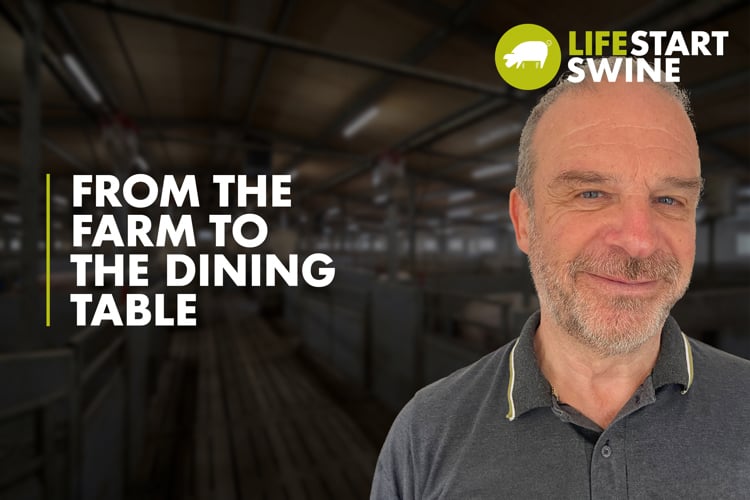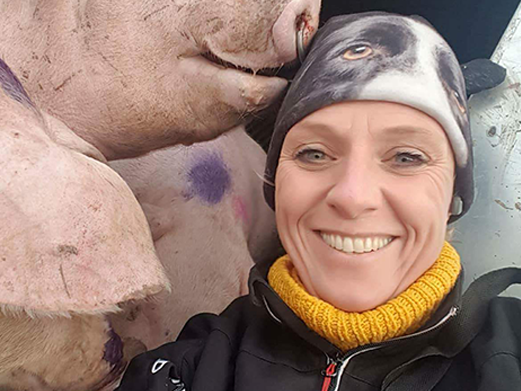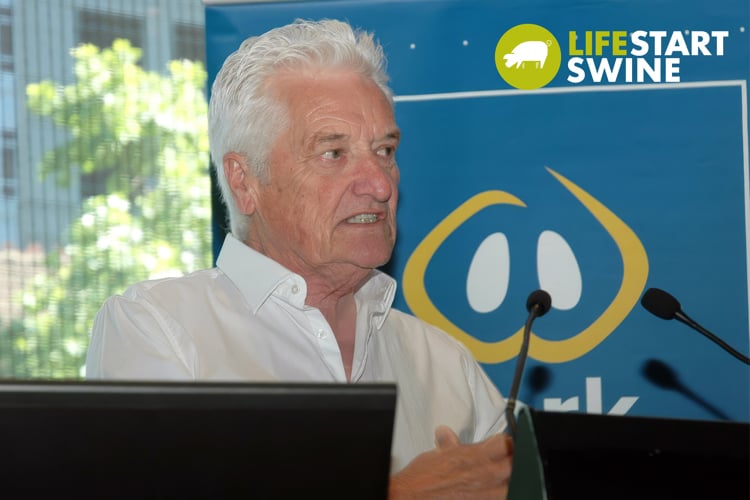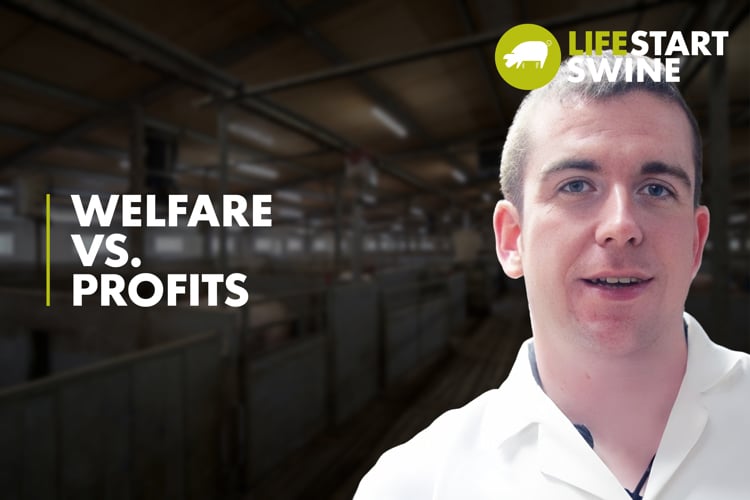
- 2022
- COMMUNITY STORIES
Sanne Baden, Pig Producer Adviser in Denmark
I was working for a genetics company and I was sent to a K.A-customer, as I have had experiences with their genetics. The issues we were facing was tail biting, and the majority were seen in the pigs from the company I was representing. I did my homework and had some information beforehand. A few consultants had been working on this farm, so I knew there was a lot of work to be done.

My first day at the farm was a warm welcome, and I was guided around by the manager and the staff. While not wanting to raise an eyebrow, coming from a country with a very low antibiotic usage, I was very surprised to see how many antibiotics were administered to the pigs, and with so little success (I had reviewed medical information beforehand). In my opinion, the pigs were not responding to the medicine, so the thing to do at that moment was: (1) test all for resistance to the medicine, including a bacteria profile from sick pigs. As tail biting is multifactorial, there can be a million causes, so I started with the most common ones; (2) check ventilation (here, I used an easy testing method: I put water on my lower arms and place myself in the pen sitting on the floor); (3) verify the pen cover, feeder space, and drinkers (numbers, pressure, height); and (4) check feed for toxins, as they didn’t use any toxin binders.
We walked away from the weaners and down the corridor to the grow-finishers. In the corridor, we could see that the electrical grounding was damaged in many places (this can affect many things if you don’t have 100% grounding). Also, at the sections with finishers, the pen cover was so high that I couldn’t see the floor type. Then, we added two more topics on our list: (5) Fix electrical grounding, and (6) reducing pen density.
I did the same as in the weaner section, and two other topics came to my mind: (7) checking for any drafts, and there were some very drafty pens (the ventilation was broken, and air was “dropping” into the pen ). (8) I could also see skin lesions on some of the pigs, not bite marks (later, the vet told me that some medications could be the cause, as the urine can become very acidic and caustic).
We finished the day and decided to meet in the morning to draw up an action plan. Normally, I would do a maximum of three action points. But as this was so multifactorial, we decided to go with eight points (listed above).
I went home and we held three meetings later on. The first meeting showed that all eight points were causing failure. There was resistance to almost all antibiotics, we found different toxins in the feed, the ventilation was repaired, and the electrical grounding was resolved. Blood samples clarified the disease profile. Results of the second meeting: so far, the tail biting has stopped, which pleased everyone. The pigs were looking better, had better ADG, better FCR, and reduced mortality. Results of the third meeting: the customer now had a new problem - they now had too many pigs as the mortality had dropped, so they decided to build another stable. I was very pleased. What is the lesson learned? I have been on many farms, looking at so many different issues - everything from savaging, tail biting, hernias, semen issues, production failure of almost every kind, PWM, setting up organic and outdoor farms, and loading behavior - you name it. 99,9% of all cases are caused by basic flaws, and, yes, that can be a million things. But one thing we can always ask ourselves is “Am I doing the right thing for my pigs at the physiological stage they are at right now?” And always act on our response, handling vaccinations, antibiotics, feed, etc.
It is vital that we know the pigs’ needs at any stage. For example, it is very important that newborn pigs have a minimum of 35 degrees Celsius at birth and it is very important that they are not exposed to any draft (if, for example, you step out of a nice hot shower and place yourself, naked, in the garden on a cold windy day, you’ll catch a cold very quickly). If you want success with your growers, the pen density needs to allow the pigs enough space, taking feeders and water supply into consideration.
It is important that even slaughter pigs on plenty of straw and silage are free from any draft, as this also causes stress and can lead to tail biting. If we want to have success with an outdoor farm, for example, it is important that the land and the grass cover is in place before we start. Most important of all, a great vaccination program will make life a lot easier. This needs to include a 100% waterproof biosecurity program.
A healthy pig is the key to great production results.
My point is that we should never just guess at what the causes of our problems are. We must have all the “evidence” we can find. Never change too much at the same time and have the patience to see the effect. Yes, I have been a part of both successes and failures, but I have learned from both. I wish every success to all of you and that you never stop learning and remain curious.


